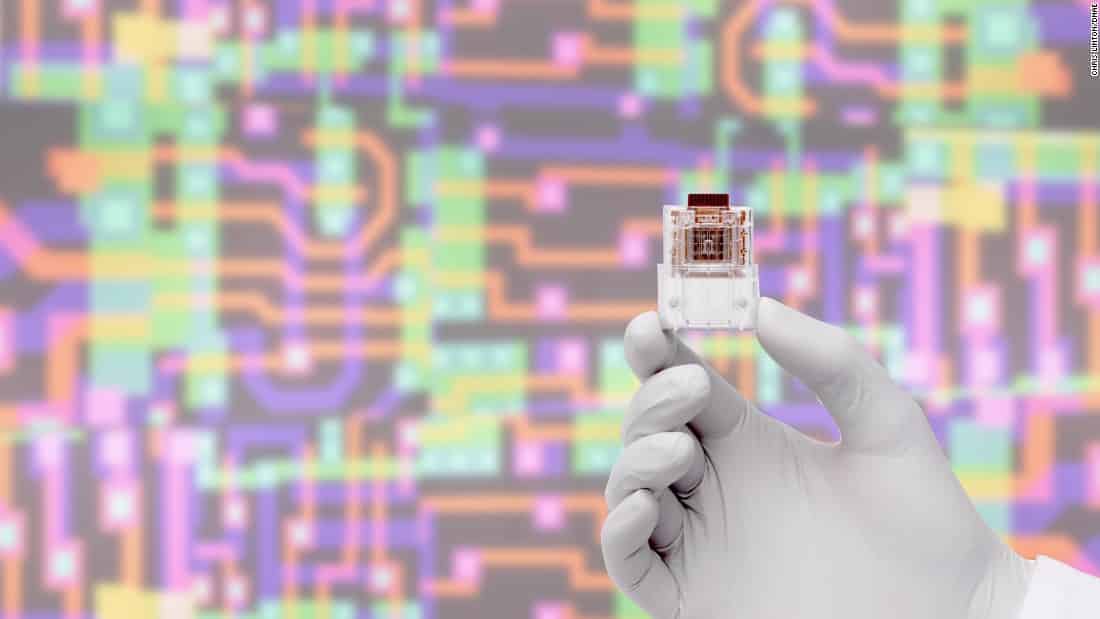Programmable Droplets that Could Enable More Efficient, Cost Effective Biology Experiments
Fluids behave very differently on the micrometric scale than they do in everyday life and microfluidic systems deal with very small volumes of these fluids, down to femtoliters (fL) which is a quadrillionth of a liter.
A microfluidic chip is a pattern of microchannels, molded or engraved. This network of microchannels incorporated into the microfluidic chip is linked to the macro-environment by several holes of different dimensions hollowed out through the chip. It is through these pathways that fluids are injected into and evacuated from the microfluidic chip.
But the catch is that this means that they are mechanical, and they break down all the time. A massive part of the costs in healthcare—both in development of pharmaceuticals and in lab tests—is spent on the tedious of work of manually moving around small amounts of liquid.
A single blood test in the United States costs an average of $1,500. A biologist in a lab will spend 30–50% of their time simply moving liquids, and will go through a massive amount of disposable lab equipment in the process.
“Biology is moving toward more and more complex processes, and we need technologies to manipulate smaller- and smaller-volume droplets,
” says Udayan Umapathi, a researcher at the MIT Media Lab, who led the development of the new system. “Pumps, valves, and tubes quickly become complicated. In the machine that I built, it took me a week to assemble 100 connections. Let’s say you go from a scale of 100 connections to a machine with a million connections. You’re not going to be able to manually assemble that.”
With his new system, Umapathi explains, thousands of droplets could be deposited on the surface of his device, and they would automatically move around to carry out biological experiments.
“The operator specifies the requirements for the experiment — for example, reagent A and reagent B need to be mixed in these volumes and incubated for this amount of time, and then mixed with reagent C. The operator doesn’t specify how the droplets flow or where they mix. It is all precomputed by the software.”
The model uses a printed circuit board, a printed electronic gadget that comprises of a plastic board with copper wiring kept over it. It is designed with a variety of terminals. In the model, the analysts coat the board with a substantially denser cluster of little circles, just a micrometer high, produced using a hydrophobic (water-repellent) material. Beads skate over the highest points of the circles. The specialists are additionally exploring different avenues regarding structures other than circles, which may work better with specific natural materials.
The team’s aim was to plan a covering for the surface of the circuit board that would lessen grating, empowering beads to slide crosswise over it, and that would keep natural or concoction atoms from adhering to it, so they won’t debase future investigations.
This system has a hydrophobic surface with beads saved on it normally attempt to accept a round shape. Charging a cathode pulls the bead descending, straightening it out. In the event that the cathode underneath a leveled bead is progressively killed, while the anode alongside it is slowly turned on, the hydrophobic material will drive the bead toward the charged terminal.
Moving beads requires high voltages, somewhere close to 95 and 200 volts. However, 300 times each second, a charged cathode in the MIT analysts’ gadget interchanges between a high-voltage, low-recurrence (1-kilohertz) flag, and a 3.3-volt high-recurrence (200-kilohertz) flag. The high-recurrence flag empowers the framework to decide a bead’s area, utilizing basically a similar innovation that touch-screen telephones do.
In case the bead isn’t moving quickly enough, the framework will naturally support the voltage of the low-recurrence flag. From the sensor flag, the framework can likewise appraise a bead’s volume, which, together with area data, enables it to track a response’s advance.
Umapathi believes that digital microfluidics could drastically cut the cost of experimental procedures common in industrial biology. “If you look at drug discovery companies, one pipetting robot uses a million pipette tips in one week. That is part of what is driving the cost of creating new drugs. I’m starting to develop some liquid assays that could reduce the number of pipetting operations 100-fold.”






























